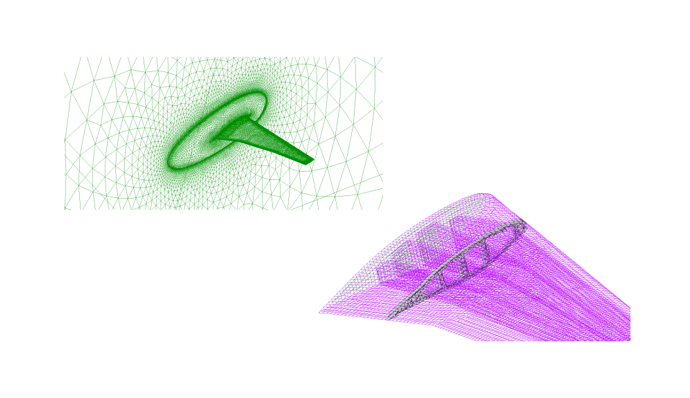Aim of the Project
Increasing aerodynamic efficiency is one of the most important issues in aviation. To achieve this, the design of the wings must be updated. Wing tip extensions are one of the applications that increase efficiency. C-wing is one of the most effective wing tip extension applications. The C-wing poses a challenge in aeroelastic analysis. Having multiple surfaces for gust loads will also present a challenge. These interactions need to be examined and the optimum design should be reached. An example for 1-cosine gust is shown in Figure-1.
The aim of this project is to reach the most optimum design possible by performing flutter analysis on C-wings and examining the gust effect. In this context, it is aimed to reach an aircraft design that will remain within safety limits.

Figure 1: 1-Cosine Gust Profile
Summary of the Project
Increasing flight efficiency has been one of the most important issues throughout the history of aviation. Institutions such as NASA and companies such as Boeing and Airbus are doing a lot of research on this subject. The most obvious indicator of flight efficiency is aerodynamic efficiency. In order to make progress in this regard, either improvement will be made to the existing wing models or a revolutionary wing design will be made.
Drag force is composed of different effects. One of these is eddy drag, which is an important part of drag force in level flight. A wing tip extension is used to reduce eddy drag at the wing tip. The winglet with fin is an example of this. The C-wing is one of the most efficient applications of wingtip extensions. Since the C-wing has a complex design and affects the aircraft both structurally and aerodynamically, the most effective design can be achieved with optimization work.
There is only one study in the literature on flutter analysis of C-wing configuration. In this study, Cui (2012) performed flutter analysis by coupling Ansys and CFX programs [1]. However, MSC NASTRAN/PATRAN training is available in our university. Accordingly, the same aircraft model will be analyzed with Nastran. The computational FEM mesh and CFD grids of study’s C-Wing model is shown in Figure-2.

Figure 2: Computational grids of the C-Wing: (blue) FEM mesh, (black) CFD grid
The project is divided into 4 work packages. The first work package is to validate the solution by performing a flutter analysis of the Modified MAVRIC model with Nastran. For instance, the results of a 1-cosine gust load analysis on BAH Wing is shown in Figure-3 and Figure-4. The second work package is the optimization of the Modified MAVRIC model for flutter via Nastran. This work package will be a useful study to observe the effect of gust loads on the aircraft configuration by comparing it with the previous work package. It will also provide experience as an example for optimization using Nastran.

Figure 3: Response of a Rigid Body Plunge Mode
The third work package is the modeling of gust loads in Nastran. In this work package, Sharp Edged and 1-Cosine gusts which are the critical gusts among other gust profiles will be used. The sharp-tipped gust has constant speed and will suddenly encounter the aircraft. 1-Cosine gust, on the other hand, is the gust whose profile is the same as the graph of the 1-Cosine function. Gusts are only modeled for aerodynamic loadings. Therefore, when the matrix is created from the equations of motion, the gusts will create a loading that does not depend on the variables (displacements). In this case, a solution cannot be reached with the flutter determinant. Only the dynamic response of the system can be obtained at certain velocities. The aim of the third work package is to reach this dynamic answer.

Figure 4: Wing Root Bending Moment
The aim of the fourth work package is to make aeroelastic optimization based on the Modified MAVRIC model under gust loads. If SU2 and Nastran are coupled, the aeroelastic analysis will be done in this way. Thus, the aeroelastic analysis will have high fidelity solution. Achieving the optimum aircraft configuration in terms of aeroelasticity under gust loads can be considered as the output of this project.
References
[1] P. Cui and J. Han. Prediction of flutter characteristics for a transport wing with wingtip devices. Aerospace Science and Technology, 23(1):461–468, Dec. 2012. doi: 10.1016/j.ast.2011.10.005. URL https://doi.org/10.1016/j.ast.2011.10.005.
